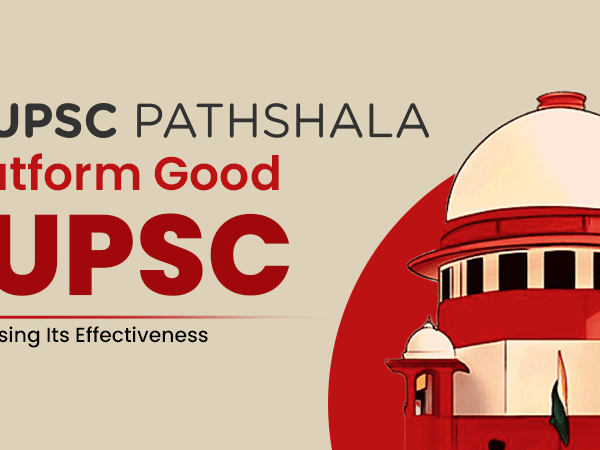When we think of CSAT as an aptitude test, we raise questions like “Are we allowed to use calculators during UPSC CSAT paper?”, or “Will CSAT be qualified without using a calculator?”. The following article will resolve your doubts regarding CSAT and its guidelines.
What is CSAT?
CSAT stands for Civil Services Aptitude Test. It became a part of the UPSC Exam (Prelims) in the year 2011. Its main objective is to test analytical skills, reasoning ability, and aptitude.
Despite the resistance towards the introduction of CSAT, the paper survives in the current exam pattern. It is a second paper to the general studies paper of the preliminary stage of UPSC. It is also known as the General Studies paper – II. However, it should not be confused with the general studies paper-2 of the Mains examination, consisting of Polity questions.
What is the Syllabus of CSAT?
CSAT Exam Pattern: Unlike any other part of the UPSC paper, CSAT paper is of qualifying nature. One should get a minimum of 33% to qualify. It is crucial, as failing in this paper will fail you for the whole UPSC paper.
To qualify for the CSAT paper, the understanding of the exam pattern carries a lot of importance.
- The Number of Questions Involved: 80 Objective-Type (MCQ) questions.
- Negative Marking involved: Yes (1/3rd of the maximum marks for the question).
- The time given: Two hours.
- Language of CSAT exam paper: English/Hindi.
- Maximum Marks: 200.
- CSAT Qualifying Marks: 66 marks (33% qualifying criteria).
CSAT Syllabus: The syllabus of the CSAT paper is like that of any aptitude test. The CSAT paper level is moderate, as it stays fixed up to the 10th grade, with some limited topics from that 11th or 12th grade.
The syllabus of CSAT consists of the following broad categories:
- Comprehension.
- Interpersonal skills including communication skills.
- Logical reasoning and Analytical ability.
- Decision-making and Problem-solving.
- General Mental Ability.
- Basic Numeracy (numbers and their relations, orders of magnitude, etc.) (Class X level), Data Interpretation (charts, graphs, tables, data sufficiency, etc. – Class X level)
Books for CSAT: A good analysis of previous papers is a must for CSAT preparation. It makes our preparation easy and effective. However, to practice and strengthen our fundamentals, the following books are often recommended:
- CSAT Paper – 2 Manual by TMH
- Analytical Reasoning – M. K. Pandey
- Verbal & Non-Verbal Reasoning – R. S. Aggarwal
Are We Allowed to Use Calculators During UPSC CSAT Paper?
In UPSC calculator usage is among the many confusions of aspirants. Here are the important points regarding the use of calculator in UPSC examination:
- The use of a calculator is not allowed for UPSC Civil Services Preliminary Exam.
- However, candidates are allowed to use scientific (non-programmable type) calculators at the mains examination of UPSC.
- Programmable type calculators will still not be allowed, and the use of such calculators is considered an unfair means of conduct by the candidates.
- Loaning or exchanging of calculators in the examination hall is not permitted.
- It is also important to note that candidates are not permitted to use calculators for answering objective type papers. They should not, therefore, bring the same inside the hall.
Should I Use a Calculator During Practice of CSAT?
Since CSAT only involves questions up to grade ten, using a calculator during practice will not make it easier. Moreover, getting habitual to a calculator might end up hampering our performance in the following ways:
- It will consume a lot of time, and we will lose track of time in real exams.
- It may create anxiety with every next question in the real exam because there will be no calculator in our hands.
- You might end up trusting your calculator more than your brain.
- Using a calculator for questions of 10th grade will only lower your confidence level for the real exam.
Hence, it is better suggested to practice without any calculator during UPSC preparation of CSAT.
What are the Other Important Guidelines for UPSC Prelims?
Although the guidelines for UPSC may change according to requirements, but here are some general UPSC guidelines to be strictly followed during the exam:
- Bring a black ballpoint pen.
- Normal wrist watches are permitted; but not smartwatches.
- No mobile phones or other electronic devices.
- Don’t bring any valuables to the exam venue.
- Reach the venue well in advance.
- Be careful while filling the OMR answer sheet.
- There will be negative marking.
Conclusion:
Since using a calculator is prohibited during the CSAT exams; one should keep in mind that even the CSAT preparation should be calculator free to avoid any dependence during the examination. Read more blogs on our website for more UPSC preparation guidance.







